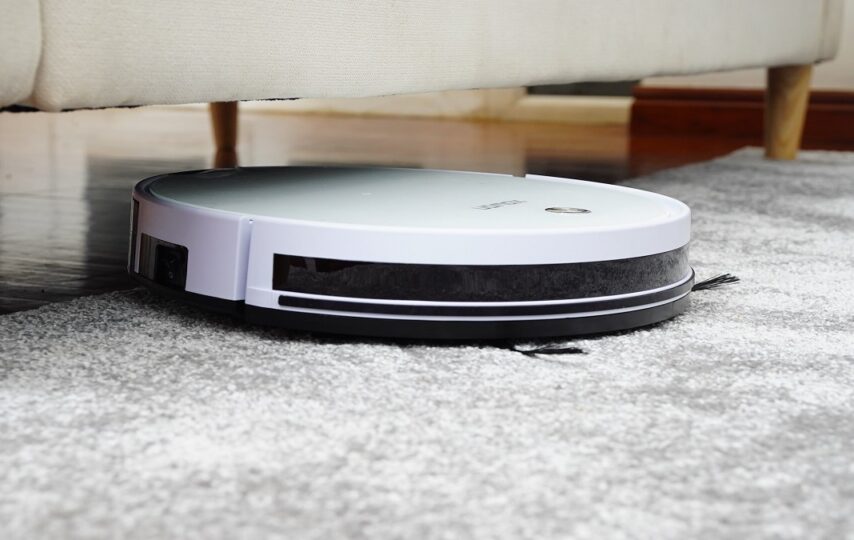Are you tired of your robot vacuum overheating and leaving unfinished cleaning tasks? Say goodbye to this frustrating problem and welcome a seamless cleaning experience with our expert guide on troubleshooting overheating issues in robot vacuums.
In this blog post, we’ll walk you through the step-by-step process of identifying the root causes behind these thermal mishaps and provide simple yet effective solutions to keep your robot vacuum cool and efficient.
With our valuable insights, you can bid farewell to interruptions and enjoy a consistently clean home, all thanks to a smoothly functioning robot vacuum. Get ready to unlock the benefits of a hassle-free cleaning journey!
Why Trust Our Expertise?
We understand that when it comes to technical matters, trust is paramount. Meet Hasnain Sethar: The Vacuum Tech Guru at TechieQuery. With his extensive experience in the world of tech gadgets and home appliances, Hasnain has meticulously crafted this article to provide you with actionable solutions, focusing on positive sentiments and user-friendly content.
Understanding The Causes of Overheating
Before we delve into the troubleshooting steps, it’s crucial to grasp why robot vacuums may overheat in the first place.
Clogged filters, excessive dust accumulation, or motor malfunctions are just a few common culprits. But don’t worry, armed with our guidance, you’ll become an expert at identifying and resolving these issues.
Troubleshooting Tips For Optimal Performance
Without further ado, let’s dive into the heart of the matter – troubleshooting overheating problems in your robot vacuum. Follow these steps carefully, and you’ll soon witness a dramatic improvement in its performance:
1. Check And Clean Filters Regularly
Frequently overlooked but immensely vital, filters play a significant role in your robot vacuum’s overall efficiency.
Cleaning them regularly is a simple yet effective way to prevent overheating. By removing trapped dirt and debris, your vacuum will breeze through cleaning tasks with ease.
2. Maintain Proper Airflow
Ensure that nothing obstructs your robot vacuum’s air vents or exhaust ports. Proper airflow is essential for efficient cooling, so keep the vacuum’s surroundings clear of any potential blockages. You’ll notice a significant difference in performance once the airflow is optimized.
3. Vacuum’s Operating Environment
Temperature and humidity can affect your robot vacuum’s performance. Avoid operating it in extreme conditions, such as direct sunlight or damp areas. Optimal room temperatures and dry environments are best suited for your robotic helper’s smooth functioning.
4. Give It a Rest
Just like us, robots need rest too! If your vacuum has been tirelessly cleaned for an extended period, consider giving it a break. Allowing it to cool down between sessions will prolong its lifespan and prevent overheating.
5. Update Software And Firmware
Technology evolves rapidly, and so does your robot vacuum’s software. Regularly check for updates and firmware upgrades provided by the manufacturer. These updates often include optimizations and bug fixes that can contribute to preventing overheating issues.
Frequently Asked Questions
Can overheating damage my robot vacuum permanently?
Yes, prolonged overheating can lead to permanent damage to the vacuum’s components, affecting its performance and longevity. That’s why it’s essential to address overheating problems promptly.
Is it safe to leave the robot vacuum unattended during cleaning?
While modern robot vacuums are designed with safety features, it’s generally advisable to keep an eye on it, especially when troubleshooting potential overheating problems.
How often should I clean my robot vacuum’s filters?
The frequency of filter cleaning depends on usage and the environment it operates in. As a general rule, aim to clean the filters every 2-4 weeks to maintain optimal performance.
Conclusion
Congratulations! You’ve now acquired expert-backed knowledge on troubleshooting overheating issues in robot vacuums. Armed with these insights, you can ensure a seamless and efficient cleaning experience with your beloved robotic helper.
Remember, regular maintenance and timely troubleshooting are the keys to keeping your robot vacuum in top-notch condition. Happy cleaning!







